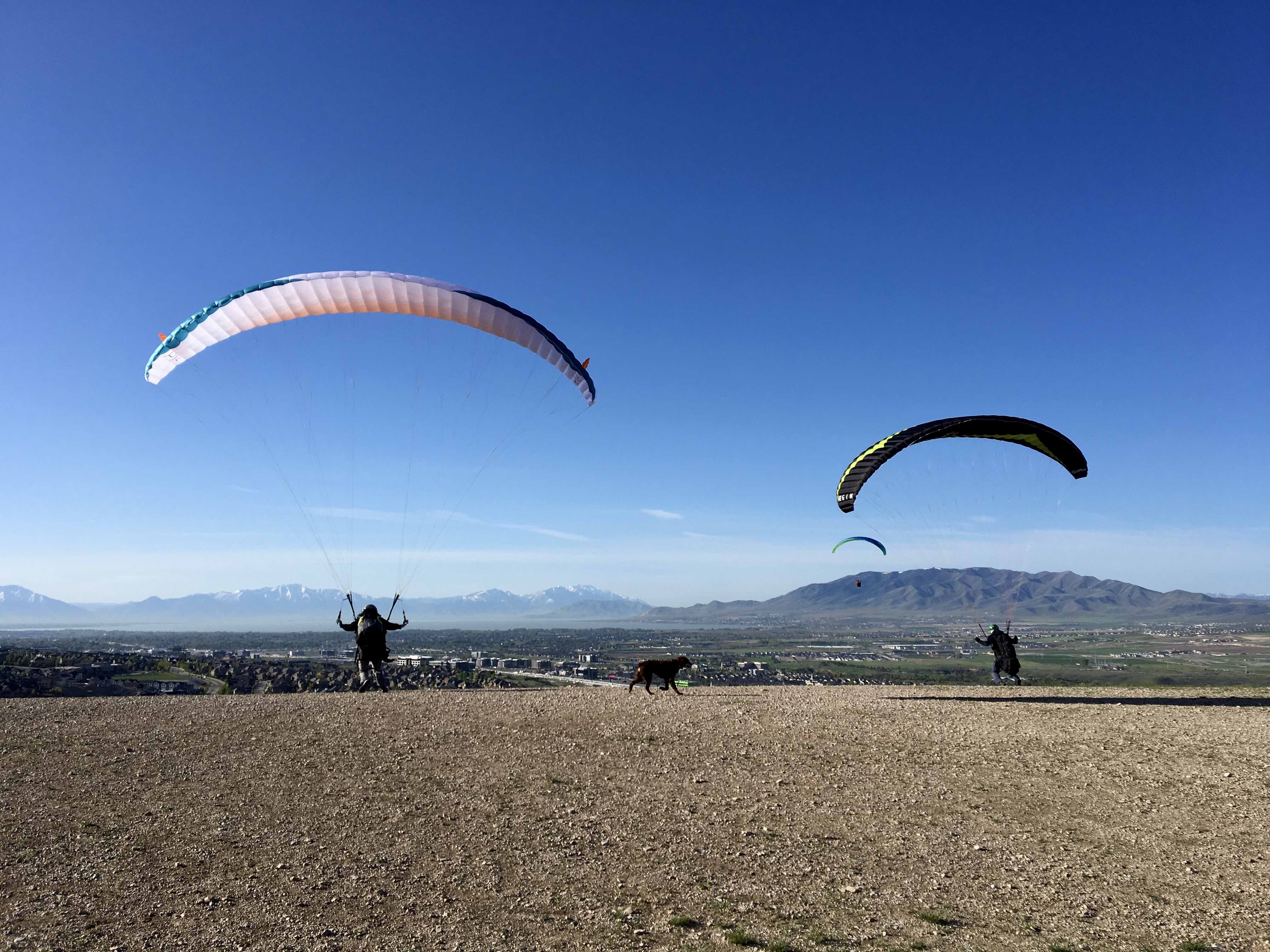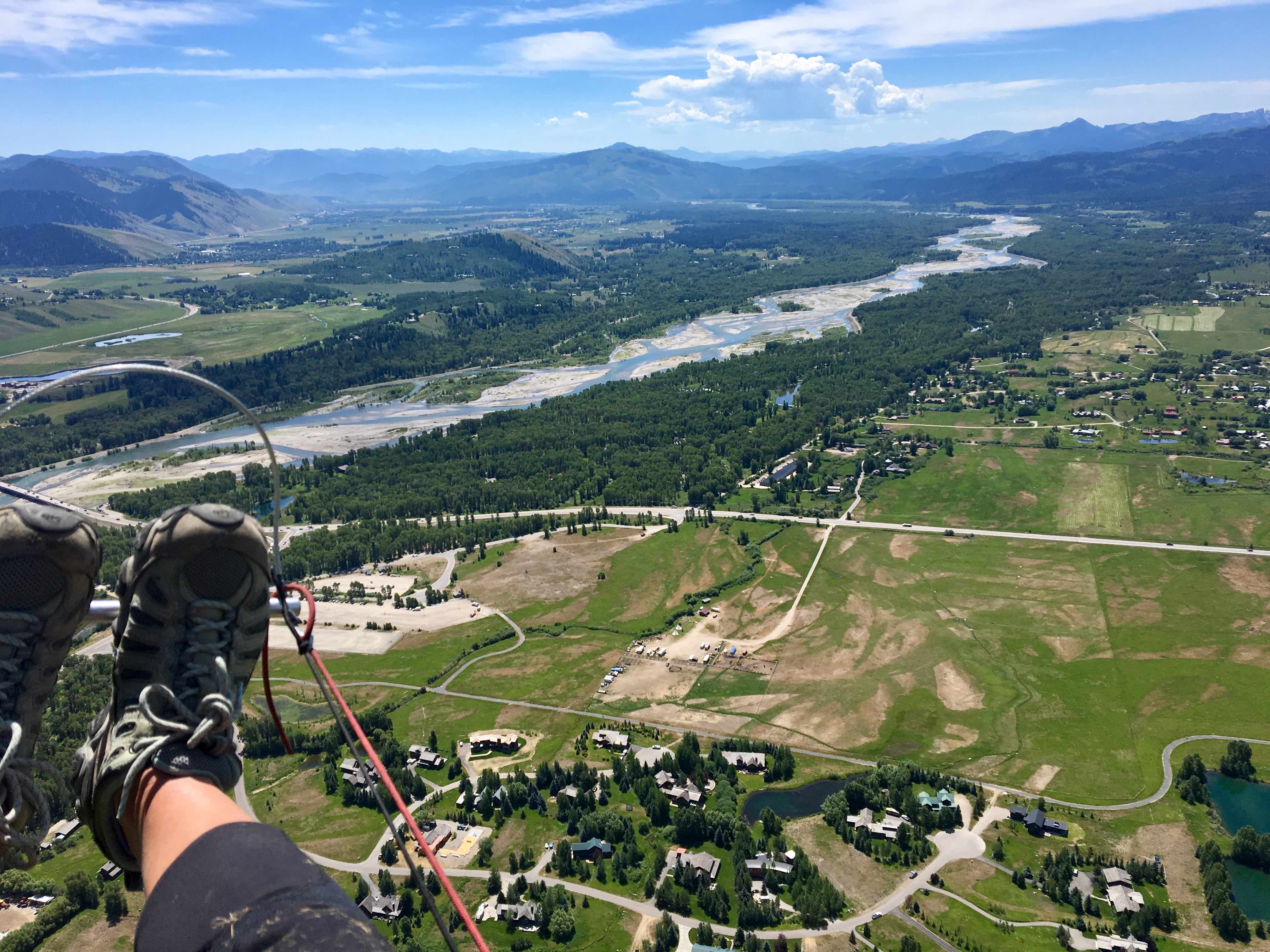By Julia Knowles
Originally published in USHPA Pilot, September/October 2020

We all have our own pre-flight checklist that we run through before launching: Harness connected? Biners locked? Reserve?
But even before beginning your typical preflight, I’d like to suggest you start with a mental preflight checklist. I’ve seen pilots of all experience levels rushing to get into the sky without taking stock of their mental or physical state. It’s easy to let our excitement get in the way of good preparation.
After seeing how high the consequences can be in our sport, I can assure you that you don’t want to risk it. If you want to give yourself every opportunity to have a fun and safe flight, the following items are great
to review while your feet are on the ground and your gear is still in the bag.
How am I feeling physically?
Assessing your physical state can help you understand your available
bandwidth for flying. Feeling fresh and healthy is the ideal starting point for a flight, but life isn’t always perfect. We all have some days when we feel our best, and others when we might be distracted by a nagging injury or lack of sleep. Dehydration and fatigue happen, especially when you’re taking advantage of a string of consecutive long, flyable summer days.
Recognize that physical needs can distract you while you’re making crucial decisions in flight. They can also serve as “ground suck” and land you in the LZ sooner than you’d hoped. No sweat if that’s the case, just know where you’re at before you leave the ground and plan your flight accordingly.
For example, I’ve learned that my bump tolerance is much higher when I’m well-rested and fresh. My reactions are quicker, and I’m better at honing in on lift. If I begin the flight already tired, my fatigue seems to magnify the turbulence, it’s harder to make sense of things, and I might feel beaten up. Feeling your best will lead to more success!
How do I feel mentally?
This one can be a bit more difficult
to assess and can take practice. Our personal lives can impact our mental state at launch, too. Be cognizant of big decisions or work stressors that might be weighing on your mind and affecting your headspace. Sometimes these concerns can be put in their place with a little meditative moment at launch. Try deep breaths or focusing on sensory inputs such as sights and sounds. Other times, lingering frustrations or stressors may be distracting enough to cause us to stand down.
As you stand on launch, are you stoked or is something making you anxious or distracted? Is that anxiety relevant to your decision to fly? To cope with irrelevant jitters—perhaps I’m feeling pressure from a line of pilots behind me at launch—I meditate on three things that make me feel confident about doing that flight. Examples might include being current, being comfortable with your gear, and having confidence in the forecasted conditions for the day. If you’ve done your homework and made a good decision that conditions are flyable, you should have no problem finding plenty of reasons to feel good about launching.
Taking a few deep breaths or pausing a minute at launch to appreciate the view also helps with pre-launch jitters. Free flight is, after all, for fun! Although there are times when we may need to put on the blinders and focus on the task at hand (such as during inflation), stepping back to put it all into perspective before launch can be both valuable and rewarding.
What if the things making you anxious aren’t irrational? Listen carefully to that “spidey sense.” If something is giving you pause while your feet are still on the ground, it’s bound to be even more concerning once you’re in the air. How can you tell the difference? Focus on observations, not hopes and wishful thinking. We’re all eager to latch on to signs that conditions might be improving and loath
to throw in the towel when we’ve invested time and effort to get to launch. Behavioral economists refer to this investment as a “sunk cost.” It’s already been spent, regardless of whether you end up flying or not. You won’t recover the cost if you fly, so don’t let your prior investment of time and effort make or break your decision to launch.

Are there (multiple) warning flags?
One warning flag might be fine. Perhaps the conditions are a touch spicier than what you’ve flown in so far this season. But if things start stacking
up, that changes the picture. Stronger conditions, plus a new wing you’re still getting to know, and you’ve got to be at work in an hour? Maybe it’s not worth flying right now. Choosing the level
of risk you’re willing to accept is very personal, but know your number and stick to it.
I’m definitely sitting out if there are three things that give me pause, even if they aren’t all related to flying. I sat out a flyable window recently because the wind was a little cross, there was a lot of traffic in the air, and the temperature was hot enough to make me a bit cranky. The conditions were totally flyable, but the combination of minor annoyances left me distracted enough to choose to hang out on the ground instead. Launching into the busy traffic pattern already irritated just didn’t sound like fun!
How would I like this flight to go?
So if we’re feeling good physically, and we feel mentally prepared to take on the day, the next step is to prepare for your flight and have a flight plan. Visualization is a powerful tool that many of the top athletes in our sport use regularly to succeed.
Take your flight plan to the next level by visualizing each step. Picture your inflation in detail. How do you want your wing to come up—where do you need to put your hands, hips, and feet to make that happen? How hard will you need to check the surge in the current conditions? Picture the good posture you will use as you turn (if reverse launching) and torpedo to get off the hill.
Take yourself through the potentially tricky parts of the flight—launch, landing, maneuvers you might be practicing—to mentally prepare and set yourself up for success. It’ll be more fun and less stressful if you’ve already thought through it all while on the ground!
Commit and enjoy the flight.
Once you’ve run through the mental checklist, you have a decision to make. You should feel confident about it! By the time you’ve considered the points above and committed to launch, you should feel stoked to leave the ground and primed to make the most out of your time in the air. At the end of the day, each of us is the pilot responsible for our own decisions in flight. Foster confidence in your own ability
to make good decisions both on the ground and in the air, and you’ll reap the rewards for many flights to come!
Bonus: Post-Flight Check
After each flight, take a moment to review the decisions you made and their outcomes. Did you accurately identify the day’s hazards, or did something else pop up that you hadn’t anticipated? Did your flight go the way you had visualized it?
Circling the wagons with your fellow pilots and debriefing after a session can be both a learning experience and a bonding experience as well. Reflecting on your decision-making with others can help you recognize the difference between making a solid call and getting away with a borderline one, something we have all done but often may not realize. Understanding the difference is crucial to staying in the sport long term and, thus, maximizing the fun meter.
Keep your mental game honed and gain confidence in your decision-making to become the pilot in command of all situations!